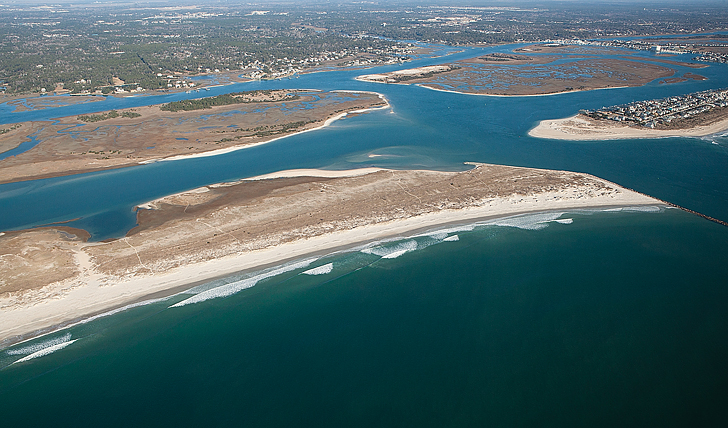The N.C. Coastal Reserve and Estuarine Research Reserve team has the fall and winter to review the high summer season’s impacts at reserve sites like Masonboro Island.
Hope Sutton, research reserve southern sites manager, said summer 2014 on Masonboro Island witnessed no major incidents besides the usual summer holiday crowds.
Like the entire state’s coastline, Masonboro Island saw far fewer loggerhead sea turtle nests as compared with the previous four years with only 15 confirmed.
Sutton said there were 29 nests during the 2013 season.
“Overall in the state, sea turtle nesting numbers were dramatically lower than last year but that was to be expected since we were on the end of a four-year increase and it tends to go up and down,” Sutton said during a Wednesday, Oct. 8 phone interview. “We had about half as many nests as last year and we still have around six or seven nests that have not hatched yet.”
Although there were half as many loggerhead nests than the previous year, Sutton said there were many more green sea turtle nests than average. Whereas North Carolina lies within the northernmost portion of one of the major loggerhead sea turtle nesting sites in the world, the state is typically right on the edge of the green sea turtle habitat.
“There were about 15 green sea turtle nests in the entire state and seven at Masonboro Island,” she said. “Green sea turtles have slightly different nesting habits than loggerheads and make false body pits so it is much harder to find their eggs.”
One of the major predators for sea turtle nests are red foxes, and after two seasons of red fox removal efforts, Sutton said not one nest on the island was lost to red foxes this season for the first time since 2005.
Sutton said the foxes did, however, prey on the nests of the American oystercatchers inhabiting the island. The oystercatcher was the other species closely monitored by the coastal reserve team during the summer months, and Masonboro Island was home to 33 pairs that attempted 63 nests. Those numbers reflect around 10 percent of the entire state’s oystercatcher population for the same period but of that number only 12 chicks hatched and merely five of those chicks matured to fledgling status.
The percentage of fledglings to total oystercatcher pairs was a .17 success rate and Sutton said it was in line with normal oystercatcher nesting success rates.
“The scientific community that focuses on shorebirds would like numbers to be around .5 chicks per pair but most of the areas I am familiar with are closer to .2 or .3,” she said.
What causes the oystercatcher nests to fail is something Sutton hopes to study in the future with 20 percent of this year’s failed nests attributed to foxes, raccoons, ghost crabs and snakes, and 70 percent to unknown factors. Explanations for those failed nests that make up the unknown 70 percent could be any one of those predators, over wash, human interference or nests that were abandoned too long by the parents.
Regarding the Masonboro Island landscape, Sutton said the beach strand appears sand deprived with certain segments of the island growing increasingly narrow between the ocean and sound.
“It is a little further south of [Whiskey Creek] that is the narrowest part,” Sutton said. “The natural flow of sand is definitely disrupted by the jetty structures so there is no doubt Masonboro is sand deprived. There is nowhere that is [in danger of an] imminent breach at this point, but like all of the area beaches, it experiences some sand loss over time.”
This fall and winter Sutton and the entire coastal reserve system will be working on updating the management plan for the system, which includes how the system operates and manages each of the 10 coastal reserve sites statewide.
To begin the process there will be a structured public meeting at 6 p.m., Monday, Oct. 27, at the University of North Carolina Wilmington Center for Marine Science facilitated by the National Oceanographic and Atmospheric Administration Coastal Services Center.
email [email protected]




